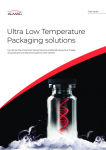Be The Match and TrakCel partner on integrated services for cell therapy developers

Be The Match (BTM) BioTherapies manages cell collection networks such as the National Marrow Donor Program (NMDP), and provides cell and gene therapies developers with cellular starting material.
TrakCel is a software developer with a tracking platform for the cell and gene therapy supply chain, and works jointly with BTM on two products, both in the oncology area.
The first one is a matched-allogeneic product, for which cord blood units are being sourced by BTM, based on patient-specific human leukocyte antigen (HLA) data captured in TrakCel’s platform, during the therapy ordering process.
Ravi Nalliah, CEO of TrakCel told us that the partners will integrate the TrakCel platform and Cord Source (an NMDP software) allowing cord blood units to be matched to each patient.
The integration work is expected to begin in August 2019, while the companies aim to launch the final product in 2020.
The second joint project between TrakCel and BTM is in support of an autologous CAR-T product currently in early clinical development.
For this project, BTM’s Case Management and Logistics support team will use TrakCel’s platform to manage each therapy’s progress from patient enrollment and starting material collection through to infusion.
“As trials scale up towards commercialisation, the integration will allow case managers to perform their role through a single platform,” Nalliah told us.
“Successful delivery of cell therapies at scale requires well designed supply chains, powered by personalized, experienced case managers supported by reliable, user-friendly software,” he added.
According to Nalliah, the company that develops one of these products will be publicly announced in July.
Nalliah noted that BTM’s personalized case management team has an experience of successful delivery for more than 92,000 cell therapies over the past 30 years, which will be ‘invaluable’ in meeting the needs of the expanding cell and gene therapy industry.
Starting material collection from a donor or from patients is a ‘critical part’ and can be a ‘major bottleneck’ of the cell therapy process, especially if capacity is impacted by the need to follow different, product-specific processes for each therapy, he explained.
“BTM has expansive relationships with a range of collection centers, such as apheresis clinics, and the partners will work with these to ensure that collection processes can be standardized,” Nalliah told us.
The companies will have a strategic meeting in late July, in which they will define and agree on other areas of potential collaboration.
‘More pairs of hands’ needed for cell and gene therapies
As the complexity in cell and gene therapies supply chain increases, Nalliah said that the stakeholders often ”leave [the supply chain] stretched and fragmented,” potentially exposing patients to unnecessary risks.
At commercial scale, cell therapy starting material can be sourced from hundreds of locations, manufactured at several sites, and shipped to hundreds of locations for infusion into patients, Nalliah explained.
Therefore, the supply chain involves ‘more pairs of hands’ and the management of it requires “robust IT systems, crossing multiple stakeholders, and expert case management to act on information and address deviations during each therapy’s lifecycle.”
By working together, TrakCel and BTM are aiming to provide this solution through a single combined offering, minimizing the number of contacts a cell therapy manufacturer needs to manage.
From competing to collaborating
Answering to what challenges the partners will face in their collaboration, Nalliah said: “It’s not that long since we viewed one another as competitors, so there will be a ‘getting to know you’ period, to develop a greater understanding of one another’s processes.”
He added that the integration ‘requires time and money,’ and a return on investment to justify this is often only realized as the number of clients and therapies managed by the combined offering increases.
“We will start this exercise in August for one client, with further plans for additional integrations largely dependent on client needs and timelines,” he said.

















